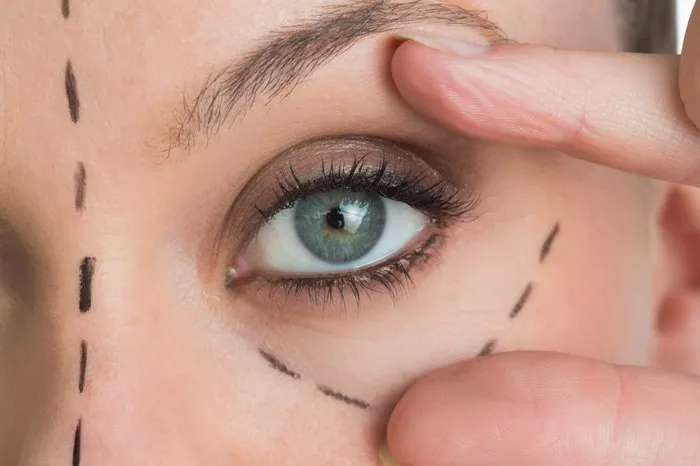Under eye bags can be a frustrating and stubborn cosmetic concern for many people. They can make you look tired, aged, and unhealthy, even when you feel fine. Under eye bags can affect both men and women of all ages and skin types, and they can be caused by various factors, including genetics, aging, lack of sleep, stress, allergies, and lifestyle habits. Fortunately, there are many creams available that can help reduce the appearance of under eye bags and improve the overall health and appearance of the skin around the eyes. In this article, we will explore the causes of under eye bags, the myths and facts about them, and the most effective creams available.
Causes of Under Eye Bags:
Under eye bags can be caused by a variety of factors, including:
Genetics: Some people are more prone to under eye bags due to their genetic makeup. If your parents or grandparents have under eye bags, you are more likely to have them too.
Aging: As we age, our skin loses collagen and elasticity, making it thinner and more prone to sagging. This can cause the fat under our eyes to protrude, creating a puffy or baggy appearance.
Lack of sleep: Sleep deprivation can cause fluid retention and inflammation, leading to puffiness and bags under eyes.
Stress: Chronic stress can cause inflammation and fluid retention, leading to puffiness and bags under eyes.
Allergies: Allergic reactions can cause histamine release, which can dilate blood vessels and create a puffy or baggy appearance under eyes.
Sun exposure: Overexposure to UV rays can damage the skin and cause wrinkles, sagging, and discoloration, including under eyes.
Lifestyle habits: Smoking, alcohol consumption, and poor diet can contribute to under eye bags by compromising skin health and circulation.
Myths and Facts about Under Eye Bags:
There are many myths and misconceptions about under eye bags, which can make it difficult to find effective solutions. Here are some common myths and facts about under eye bags:
Myth: Under eye bags are only caused by lack of sleep.
Fact: While lack of sleep can contribute to under eye bags, it is not the only cause. Genetics, aging, stress, allergies, and lifestyle habits can also play a role.
Myth: Under eye bags are a sign of illness or fatigue.
Fact: While under eye bags can make you look tired or unwell, they are not necessarily a sign of illness or fatigue. They are a cosmetic concern that can be treated and prevented.
Myth: Under eye bags can be cured with topical creams or serums.
Fact: While topical creams and serums can help reduce the appearance of under eye bags, they cannot cure them completely. To achieve long-lasting results, you may need to combine multiple treatments and make lifestyle changes.
Myth: Under eye bags are only a problem for women.
Fact: Under eye bags can affect both men and women of all ages and skin types. However, they may be more noticeable in women due to makeup and skincare practices.
Creams That are Good for Under Eye Bags:
There are many creams that can help reduce the appearance of under eye bags, ranging from natural remedies to medical-grade products. Here are some of the most popular and proven options:
Caffeine creams: Caffeine is a natural vasoconstrictor that can help reduce inflammation and puffiness under eyes. Look for creams that contain caffeine as a key ingredient, such as the Olay Eyes Ultimate Eye Cream or the Kiehl’s Eye Fuel.
Retinol creams: Retinol is a form of vitamin A that can help increase collagen production and improve skin texture and tone. Look for creams that contain retinol as a key ingredient, such as the RoC Retinol Correxion Eye Cream or the Neutrogena Rapid Wrinkle Repair Eye Cream.
Hyaluronic acid creams: Hyaluronic acid is a natural hydrating ingredient that can help plump and firm the skin around eyes. Look for creams that contain hyaluronic acid as a key ingredient, such as the L’Oreal Paris Revitalift Derm Intensives Eye Cream or the Drunk Elephant C-Tango Multivitamin Eye Cream.
Vitamin C creams: Vitamin C is a powerful antioxidant that can help brighten and protect the skin from damage. Look for creams that contain vitamin C as a key ingredient, such as the Sunday Riley Auto Correct Brightening and Depuffing Eye Contour Cream or the Ole Henriksen Banana Bright Eye Crème.
Medical-grade creams: For more severe or persistent cases of under eye bags, medical-grade creams may be necessary. These creams contain higher concentrations of active ingredients and may require a prescription from a dermatologist or plastic surgeon. Examples include the Obagi ELASTIderm Eye Cream or the SkinMedica TNS Eye Repair.
Conclusion:
Under eye bags can be a frustrating and stubborn cosmetic concern, but they are not a hopeless one. By understanding the causes and myths of under eye bags, and by exploring the most effective creams available, you can take control of your appearance and feel confident and refreshed. Whether you prefer natural remedies, over-the-counter products, or medical-grade creams, there is a solution that can work for you. Consult with a dermatologist or skincare specialist to find the best cream for your unique needs and goals. With patience, persistence, and the right cream, you can say goodbye to under eye bags and hello to a brighter, healthier, and more youthful-looking appearance.


